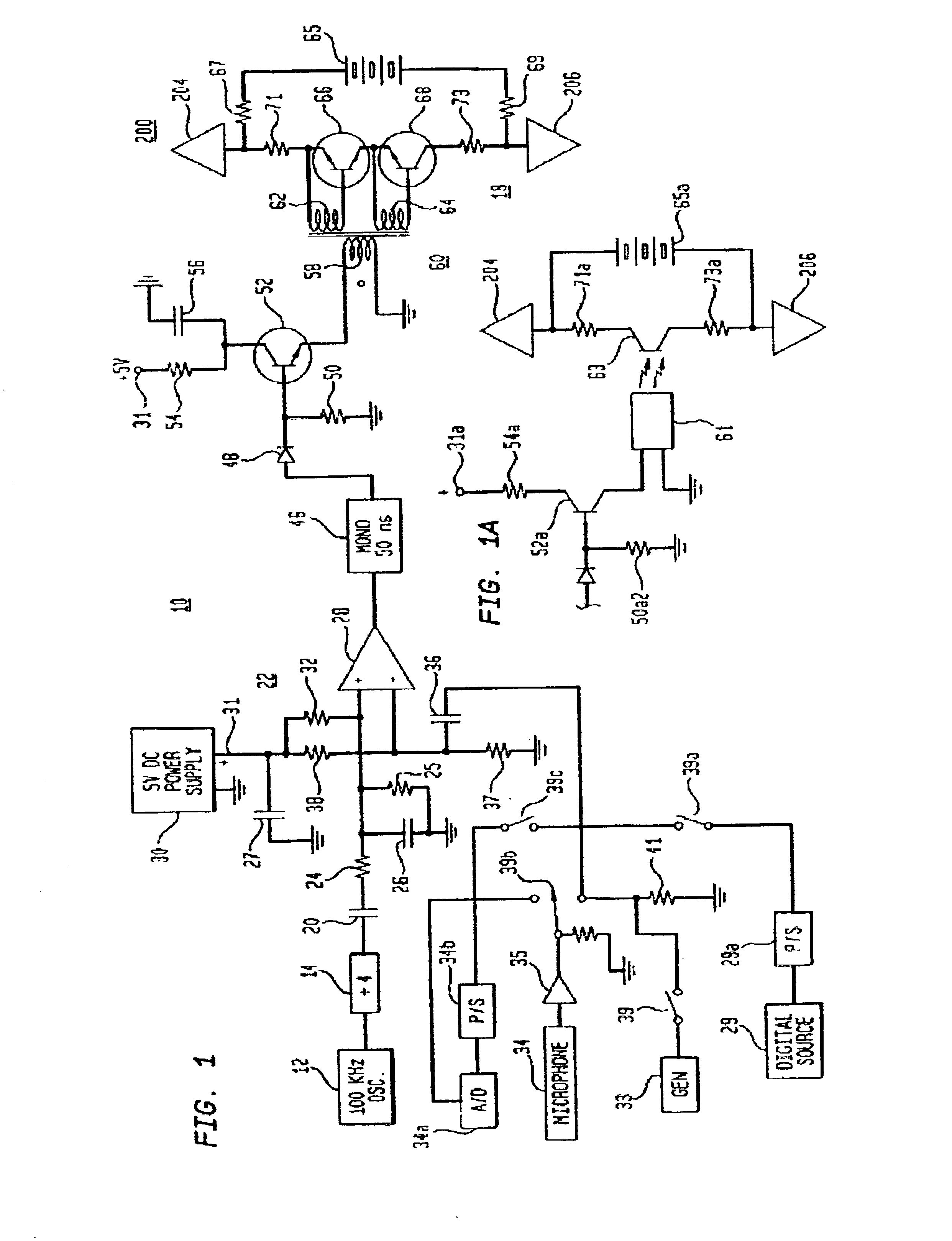Time domain radio transmission system
a radio transmission system and time domain technology, applied in the field of radio systems, can solve the problems of prolonging the length of a signal burst, adversely affecting the coupling of signals to antennas, interfering with the signal radiated, etc., and achieves the effects of increasing the security of the system, wide frequency dispersion, and fast repetition ra
- Summary
- Abstract
- Description
- Claims
- Application Information
AI Technical Summary
Benefits of technology
Problems solved by technology
Method used
Image
Examples
Embodiment Construction
[0037]Referring to FIG. 1, and initially to transmitter 10, a base frequency of 100 kHz is generated by oscillator 12, typically being a crystal controlled oscillator. Its output, a pulse signal, is applied to ÷4 divider 14 to provide at its output a 25-kHz (0 to 5 volts) pulse signal shown in waveform A of FIG. 3. Further alphabetic references to waveforms will simply identify them by their letter identity and will not further refer to the figure, which will be FIG. 3. The 25-Khz output is employed as a general transmission signal.
[0038]The output of ÷4 divider 14 is employed as a signal base and as such is supplied through capacitor 20 to pulse position modulator 22. Pulse position modulator 22 includes in its input an RC circuit consisting of resistor 24 and capacitor 26 which convert the square wave input to an approximately triangular wave as shown in waveform B, it being applied across resistor 25 to the non-inverting input of comparator 28. A selected or reference positive vo...
PUM
 Login to View More
Login to View More Abstract
Description
Claims
Application Information
 Login to View More
Login to View More - R&D
- Intellectual Property
- Life Sciences
- Materials
- Tech Scout
- Unparalleled Data Quality
- Higher Quality Content
- 60% Fewer Hallucinations
Browse by: Latest US Patents, China's latest patents, Technical Efficacy Thesaurus, Application Domain, Technology Topic, Popular Technical Reports.
© 2025 PatSnap. All rights reserved.Legal|Privacy policy|Modern Slavery Act Transparency Statement|Sitemap|About US| Contact US: help@patsnap.com



